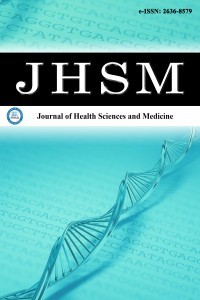1.
Pang C, Ibrahim A, Bulstrode N, Ferretti P. An overview of thetherapeutic potential of regenerative medicine in cutaneouswound healing. Int Wound J. 2017;14(3):450-459.
2.
Demaria M, Stanley B, Hauptman J, et al. Effects of negativepressure wound therapy on healing of open wounds in dogs. VetSurg. 2011;40(6):658-669.
3.
Abu-Harirah H, Qudah A, Daabes E, Amawi K, Qaralleh H.Multidrug-resistant bacterial profile and patterns for woundinfections in nongovernmental hospitals of Jordan. J Pure ApplMicrobiol. 2021;15(3):1348-1361.
4.
Sun Y, Ogawa R, Xiao B, et al. Antimicrobial photodynamictherapy in skin wound healing: a systematic review of animalstudies. Int Wound J. 2019;17(2):285-299.
5.
Tran P, Hamood A, Souza A, et al. A study on the ability ofquaternary ammonium groups attached to a polyurethane foamwound dressing to inhibit bacterial attachment and biofilmformation. Wound Repair Regen. 2015;23(1):74-81.
6.
Thet N, Alves D, Bean J, et al. Prototype development of theintelligent hydrogel wound dressing and its efficacy in thedetection of model pathogenic wound biofilms. ACS Appl MaterInterfaces. 2015;8(24):14909-14919.
7.
Stoica A, Chircov C, Grumezescu AM. Nanomaterials for wounddressings: an up-to-date overview. Molecules. 2020;25(11):2699.
8.
Nilforoushzadeh M, Amiri A, Shaghaghi B, et al. Characterizationof an enzyme-catalyzed crosslinkable hydrogel as a wound dressingin skin tissue engineering. J Laser Med Sci. 2021;12(1):e77.
9.
Stubbe B, Mignon A, Declercq H, Vlierberghe S, Dubruel P.Development of gelatin-alginate hydrogels for burn woundtreatment. Macromol Biosci. 2019;19(8):1900123.
10.
Mudgil D, Barak S, Khatkar B. Guar gum: processing, properties andfood applications—a review. J Food Sci Technol. 2011;51(3):409-418.
11.
Alves-Silva J, Cocco E, Piras A, et al. Unveiling the chemicalcomposition and biological properties of Salvia cacaliifolia benth.essential oil. Plants. 2023;12(2):359.
12.
Özdemir S, Bostanabad S, Parmaksız A, Canatan H. Combinationof St. John’s wort oil and neem oil in pharmaceuticals: an effectivetreatment option for pressure ulcers in intensive care units.Medicina. 2023;59(3):467.
13.
Andjic M, Bozin B, Draginic N, et al. Formulation andevaluation of Helichrysum italicum essential oil-based topicalformulations for wound healing in diabetic rats. Pharmaceuticals.2021;14(8):813.
14.
Sandhya A, Gomathi K. Pharmacological, bioactive screeningof medicinal plant Nigella sativa and the derived compoundthymoquinone: an invitro study. Int J Pharm Sci. 2020;11(2):2458-2465.
15.
Mekky A. Study of phytochemical analysis and antimicrobialactivity of ethanolic extract of Nigella sativa L. and Matricariachamomilla L. Al-Azhar J Agric Res. 2022;47(2):38-51.
16.
Zakaria M, Putri Y, Rahaju A, Fatmawati S, Cahyanto A. Inhibitoryeffect of calcium hydroxide combined with Nigella sativa againstEnterococcus faecalis. Maj Kedokter Gigi. 2021;54(4):181-185.
17.
Sanni O, Lakemond C, Benjamin O. Flavor release and stabilitycomparison between nano and conventional emulsion asinfluenced by saliva. J Food Sci Technol. 2022;59(11):4530-4541.
18.
Moreno-Trejo M, Rodríguez-Rodríguez A, Suárez-Jacobo Á,Sanchez-Dominguez M. Development of nano-emulsions ofessential citrus oil stabilized with mesquite gum. Seng Koh K,Loong Wong V, eds. Nanoemulsions-Properties, Fabrications andApplications. IntechOpen: 2019:45-64.
19.
Sneha K, Kumar A. Nanoemulsions: techniques for the preparationand the recent advances in their food applications. Innov Food SciEmerg Technol. 2022;76:102914.
20.
McClements D. Edible nanoemulsions: fabrication, properties,and functional performance. Soft Matter. 2011;7(6):2297-2316.
21.
Weerapol Y, Manmuan S, Chaothanaphat N, et al. Impact offixed oil on ostwald ripening of anti-oral cancer nanoemulsionsloaded with Amomum kravanh essential oil. Pharmaceutics.2022;14(5):938.
22.
Zhang Y, Shang Z, Gao C, et al. Nanoemulsion for solubilization,stabilization, and in vitro release of pterostilbene for oral delivery.AAPS Pharmscitech. 2014;15(4):1000-1008.
23.
Espino-Manzano S, León-López A, Aguirre-Álvarez G, PrinceL, Campos-Montiel R. Application of nanoemulsions (w/o) ofextract of Opuntia oligacantha CF Först and orange oil in gelatinefilms. Molecules. 2020;25(15):3487.
24.
Mauck S, Wang S, Ding W, et al. Biorenewable tough blends ofpolylactide and acrylated epoxidized soybean oil compatibilized bya polylactide star polymer. Macromolecules. 2016;49(5):1605-1615.
25.
Robertson M, Paxton J, Hillmyer M. Tough blends of polylactideand castor oil. ACS Appl Mater Interfaces. 2011;3(9):3402-3410.
26.
Silva N, Farias F, Freitas M, et al. Artificial intelligence applicationfor classification and selection of fish gelatin packaging filmproduced with incorporation of palm oil and plant essential oils.Food Packag Shelf Life. 2021;27:100611.
27.
Arrieta M, López J, Bou S, Peltzer M. Characterization of pla-limonene blends for food packaging applications. Polym Test.2013;32(4):760-768.
28.
Shojaee-Aliabadi S, Hosseini H, Mohammadifar M, et al.Characterization of antioxidant-antimicrobial κ-carrageenanfilms containing Satureja hortensis essential oil. Int J BiolMacromol. 2013;52:116-124.
29.
Saranti T, Melo P, Cerqueira M, Aouada F, Moura M. Performanceof gelatin films reinforced with Cloisite Na+ and black pepperessential oil loaded nanoemulsion. Polymers. 2021;13(24):4298.
30.
Valenzuela C, Abugoch L, Tapia C. Quinoa protein-chitosan-sunflower oil edible film: mechanical, barrier and structuralproperties. LWT-Food Sci Technol. 2013;50(2):531-537.
31.
Acevedo-Fani A, Salvia-Trujillo L, Rojas-Graü M, Martín-Belloso O. Edible films from essential-oil-loaded nanoemulsions:physicochemical characterization and antimicrobial properties.Food Hydrocoll. 2015;47:168-177.
32.
Morilla-Herrera J, Morales-Asencio J, Gómez-González A, etal. Effectiveness of a hydrophobic dressing for microorganisms’colonization of vascular ulcers: protocol for a randomizedcontrolled trial (CUCO-UV study). J Adv Nurs. 2020;76(8):2191-2197.
33.
Agudelo-Cuartas C, Granda-Restrepo D, Sobral P, HernándezH, Castro W. Characterization of whey protein-based filmsincorporated with natamycin and nanoemulsion of α-tocopherol.Heliyon. 2020;6(4):e03809.
34.
Acharya DR, Liu S, Lu H, et al. Nanoemulsion-integratedgelatin/bacterial cellulose nanofibril-based multifunctional film:fabrication, characterization, and application. Int J Biol Macromol.2024;257(1):128341.
35.
Mutlu N. Effects of grape seed oil nanoemulsion onphysicochemical and antibacterial properties of gelatin-sodiumalginate film blends. Int J Biol Macromol. 2023;237:124207.
36.
Iqbal N, Rehman A, Zaidi S, Khan K, Farooq L, Mehmood H.Comparison of antibacterial efficacy of fenugreek seed extractrinse and Nigella sativa seed extract rinse against streptococcusmutant colonies. J Pharm Res Int. 2021;33(50B):79-86.
37.
Chaieb K, Kouidhi B, Jrah H, Mahdouani K, Bakhrouf A.Antibacterial activity of thymoquinone, an active principleof Nigella sativa and its potency to prevent bacterial biofilmformation. BMC Complement Altern Med. 2011;11(1):29.
38.
Rahat I, Sharma S. A novel antibacterial topical gel fromNigella sativa and Achyranthes aspera against acne causingmicroorganisms. J Pharm Res Int. 2021;32(41):57-63.

